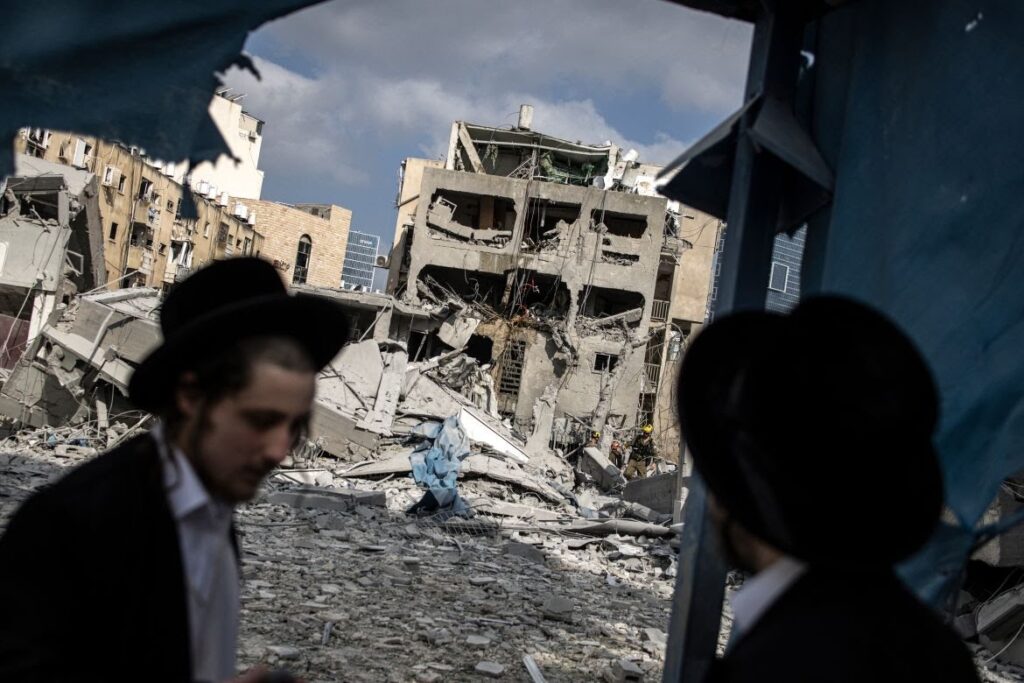News Analysis – By Abdul Lauya
A historic turning point erupted on June 13, 2025, as Israel launched an unprecedented wave of strikes on Iranian military and nuclear infrastructure, prompting a fierce Iranian retaliation that has since claimed hundreds of lives and ignited fears of a broader regional war. With the scale and stakes of the confrontation escalating daily, experts and world leaders now openly ask: Is this the spark that could ignite a third global war?
A Long-Brewing Rivalry
The roots of the Israeli-Iranian conflict trace back to the 1979 Islamic Revolution in Iran, which transformed Tehran from a U.S.-aligned monarchy into a theocratic republic staunchly opposed to Israel. Since then, the two nations have engaged in a shadow war across multiple fronts, including cyberattacks, proxy engagements in Lebanon and Syria, and covert assassinations of scientists and military leaders.
Tensions intensified sharply after the U.S. withdrew from the Iran nuclear deal (JCPOA) in 2018, with Iran ramping up its uranium enrichment and Israel conducting dozens of airstrikes on Iranian positions in Syria and beyond. Still, the conflict had largely avoided direct state-on-state warfare until now.
Operation Rising Lion As Trigger
On June 13, Israel executed “Operation Rising Lion,” its largest coordinated airstrike in decades. The campaign reportedly targeted over 100 sites across Iran using more than 200 aircraft, drones, and precision-guided missiles. According to Iranian and international sources, the strikes hit nuclear facilities, IRGC command centers, and key infrastructure, resulting in widespread destruction.
Israel justified the attack as a preemptive response to “imminent Iranian aggression,” while Tehran decried it as an act of war. In retaliation, Iran fired over 400 drones and missiles toward Israeli territory, including Tel Aviv and Beersheba. A missile strike on Soroka Medical Center in southern Israel killed several civilians and forced partial hospital evacuations.
The Human and Structural Toll
According to data from Iranian and Israeli health ministries and independent monitoring organizations:
In Iran, over 630 confirmed fatalities, including at least 260 civilians. Multiple residential buildings collapsed in Tehran, while key nuclear facilities in Arak and Natanz suffered critical damage.
For Israel, at least 24 civilians killed and over 40 injured. Significant damage was reported to infrastructure, including Soroka Hospital and several high-rises in Tel Aviv.
Additionally, the death toll includes senior IRGC officials, nuclear engineers, and first responders caught in subsequent retaliatory strikes. Property losses in both nations are estimated in the billions of dollars.
Global and Regional Implications
The conflict has drawn immediate international concern. The United Nations Security Council has held emergency meetings, while the United States, Russia, and European Union have urged both nations to de-escalate. Yet, so far, neither side shows signs of retreat.
Neighboring countries, particularly Lebanon, Syria, and Iraq, remain on edge, fearing spillover due to Hezbollah and other Iranian-backed militias. Gaza-based Hamas factions, long supported by Iran, have begun mobilizing in anticipation of wider conflict.
Energy markets have also responded sharply, with oil prices spiking 18% in the last five days, raising fears of global inflation and economic instability.
Prelude to a Larger War?
This faceoff marks the most direct and destructive exchange between Israel and Iran to date. It signals a fundamental shift from proxy warfare to open state conflict, a red line many believed neither side would cross.
The calculated use of drones and cyber-sabotage alongside conventional airstrikes also indicates a new form of hybrid warfare with blurred lines between military and civilian targets.
What distinguishes this crisis from past escalations is the directness, scale, and intent. While still regional in scope, its potential for wider escalation is significant. The involvement of nuclear facilities, civilian centers, and transnational proxies raises the stakes far beyond typical regional warfare.
A World on Edge
As the death toll rises and diplomatic channels strain, the international community faces a stark question: Can this conflict be contained, or will it spiral into a wider war involving major powers?
For now, it remains a devastating bilateral confrontation. But if proxy forces or external actors are drawn in, the risk of a broader conflict, possibly even World War III, can no longer be dismissed as mere speculation.
For advert placement and inquiries, publication of press releases, and news coverages, please call: Phone: 08052898434 Email: editor@eyereporters.com, click here to view the advert rates.



